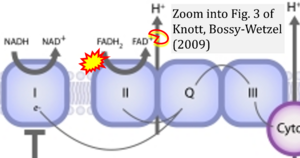Knott 2009 Antioxid Redox Signal
| Knott AB, Bossy-Wetzel E (2009) Nitric oxide in health and disease of the nervous system. Antioxid Redox Signal 11:541-54. https://doi.org/10.1089/ars.2008.2234 |
Knott AB, Bossy-Wetzel E (2009) Antioxid Redox Signal
Abstract: Nitric oxide (NO) is an important messenger molecule in a variety of physiological systems. NO, a gas, is produced from L-arginine by different isoforms of nitric oxide synthase (NOS) and serves many normal physiologic purposes, such as promoting vasodilation of blood vessels and mediating communication between nervous system cells. In addition to its physiologic actions, free radical activity of NO can cause cellular damage through a phenomenon known as nitrosative stress. Here, we review the role of NO in health and disease, focusing on its role in function and dysfunction of the nervous system. Substantial evidence indicates that NO plays a key role in most common neurodegenerative diseases, and, although the mechanism of NO-mediated neurodegeneration remains uncertain, studies suggest several possibilities. NO has been shown to modify protein function by nitrosylation and nitrotyrosination, contribute to glutamate excitotoxicity, inhibit mitochondrial respiratory complexes, participate in organelle fragmentation, and mobilize zinc from internal stores. In this review, we discuss and analyze the evidence for each of these mechanisms in different neurodegenerative diseases and propose future directions for research of the role of NO in neurodegeneration.
Correction: FADH2 and Complex II
- FADH2 is shown as the substrate feeding electrons into Complex II (CII). This is wrong and requires correction - for details see Gnaiger (2024).
- Gnaiger E (2024) Complex II ambiguities ― FADH2 in the electron transfer system. J Biol Chem 300:105470. https://doi.org/10.1016/j.jbc.2023.105470 - »Bioblast link«


